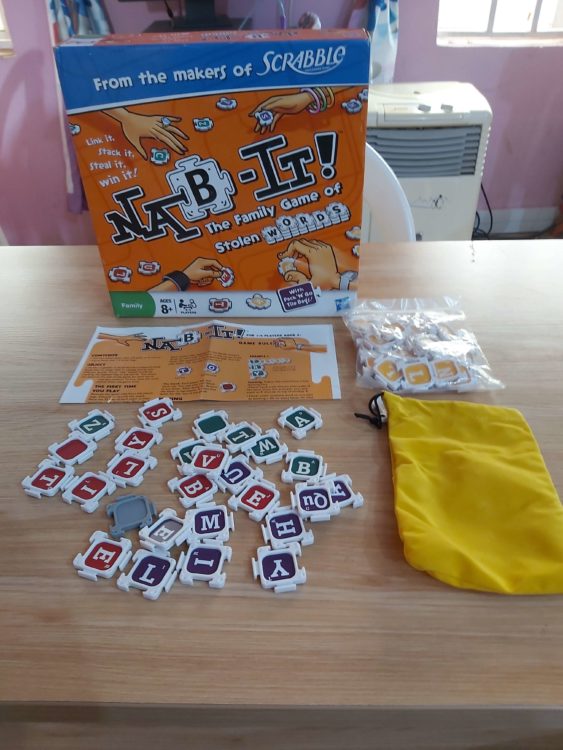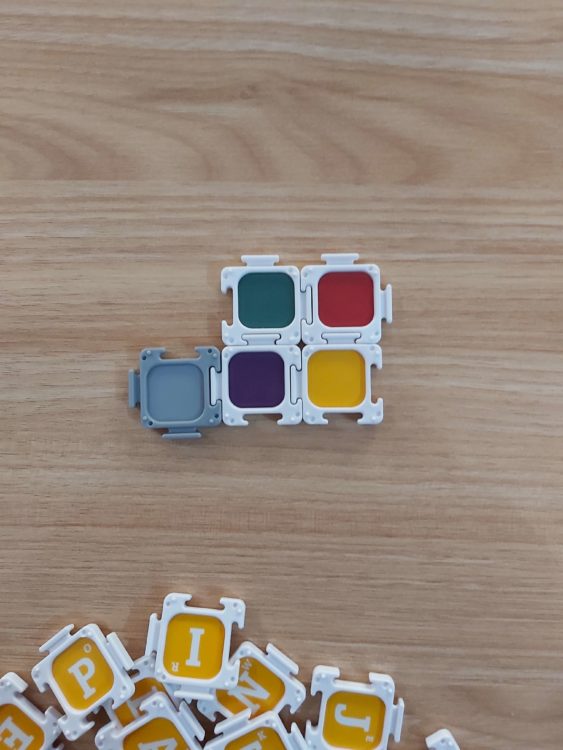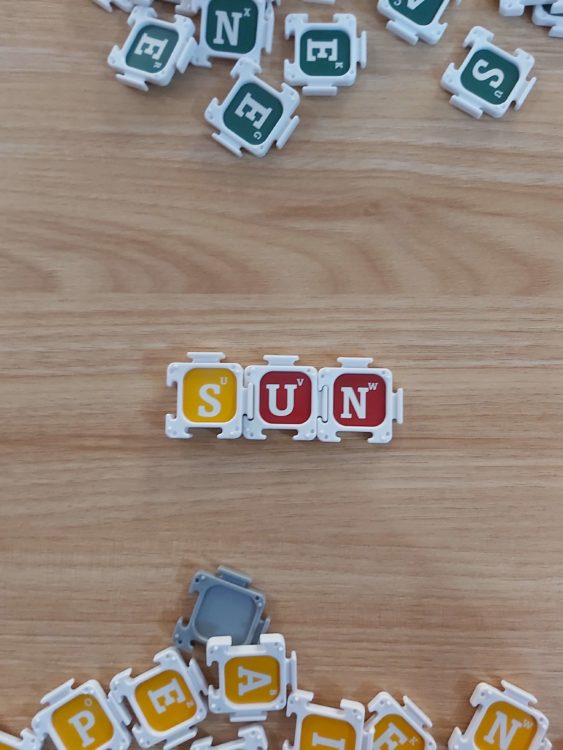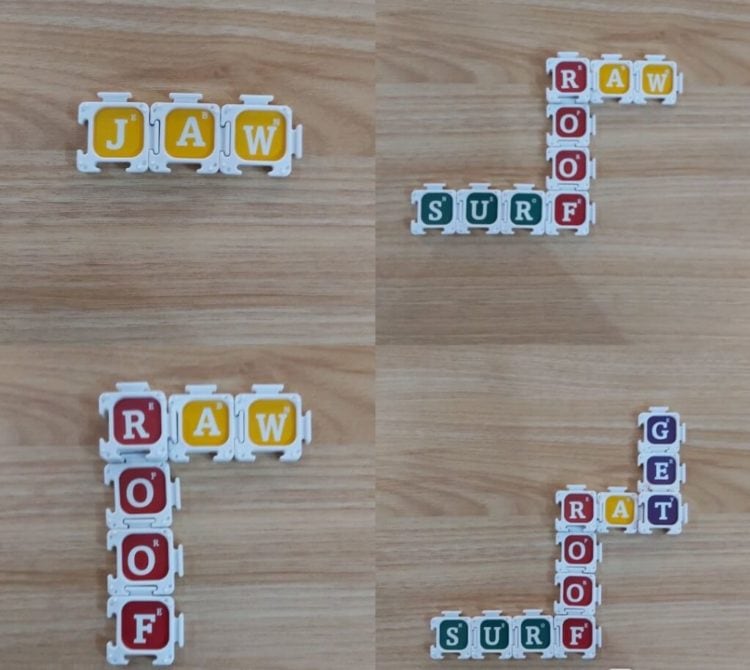
OBJECTIVE OF NAB-IT: To nab as many points as you can from the words you build or steal using color-coded letter tiles.
NUMBER OF PLAYERS: 2 to 4 Players
COMPONENTS: 100 two-sided letter tiles, 4 gray bank tiles, 4 storage bags and a rule sheet.
TYPE OF GAME: Educational Board Game
AUDIENCE: Ages 8 and Up
OVERVIEW OF NAB-IT
Nab-it is a crossword-styled word-building game. Build your words, change or steal your competitor’s words to gain control over them and win points.
SETUP

Choose a colour bag and the letter tiles therein. There should be twenty-five tiles of that colour, one of them being blank and 1 additional gray tile (which will be used for scoring).

Choose and clear the play area or table.
The youngest player goes first or the players decide who goes first.
GAMEPLAY
Every player draws five tiles from their bags and places in front of them.
The first player decides what word to build using the tiles available to them.
They then build the word on the play area and replace their used tiles with new ones.
Play then passes to the next player on the left.
The next player then proceeds to build a word by connecting more tiles to any letter of the word formed by the first player or by putting a tile on any of the tiles of the first word to change it. For example, if player A built the word ‘Sun’, player B can change the word to ‘Fun’ by stacking the letter ‘F’ on top of the ‘S’.



Certain words are not acceptable in play like abbreviations, prefixes and suffixes that cannot stand alone, foreign words not found in the dictionary or acronyms.
Players are allowed to challenge another player’s words before the next turn begins. The dictionary is used to resolves challenges. If a challenged word is unacceptable, the player who built it must remove all the played tiles and play again or exchange one or more of their tiles
If at any time, a player feels their tiles can’t be utilized, they may exchange their current tiles for a new set from their tile bags.
Players need to avoid unwittingly setting up opposing players for the win by playing the fourth tile on a stack on which the opponent may build on and ultimately nab.
If a player gets down to their last tile, they must announce it. If they fail to, they must return one of their banked tiles to the bag.
Stacking
Stacking is the act of placing a tile on another tile.

The same letter tile cannot be stacked on each other for example player B placing a Y letter tile on a Y tile previously played by A.
A player cannot stack letters entirely over a previously built word. At least one letter of the old word must appear in the new word.
Letter tiles cannot be stacked higher than five tiles.
A player cannot stack two tiles on the same spot during the same.
Nabbing
The player to place the last tile on a stack while building a word gains control over that stack and steals/nabs it to gain a point.
A player earns points per words nabbed. A smart way to do this is to nab a tile intersecting two words. The player automatically gains control over those words.
Banking
The gray tile comes into play here.
For every turn in which a player nabs a word or words, they draw a random tile from their tile bag and stack it onto the gray tile to gain an extra point for nabbing that word.
Only one tile can be banked per turn irrespective of how many words nabbed on that turn.
Blank Tiles
Every player has one blank tile which can represent any letter of his choice. Once played, the blank tile stays that letter throughout the game.
Players must be careful not to use their blank tiles too early in the game, as they may prove useful later in the game when letter tiles are limited.
SCORING
When the game ends, players count up all the words they control to get a point for each. They also get a point for all banked tiles. The player who played the last tile also earns a point for that as well. The player with the most point wins.
Where there is a tie, the tying players count the words with their colour tiles on top. Whoever has the most tiles wins but if there is still a tie, they are both declared winners
END OF GAME
The game ends if a player plays their last tile or players can no longer build words.